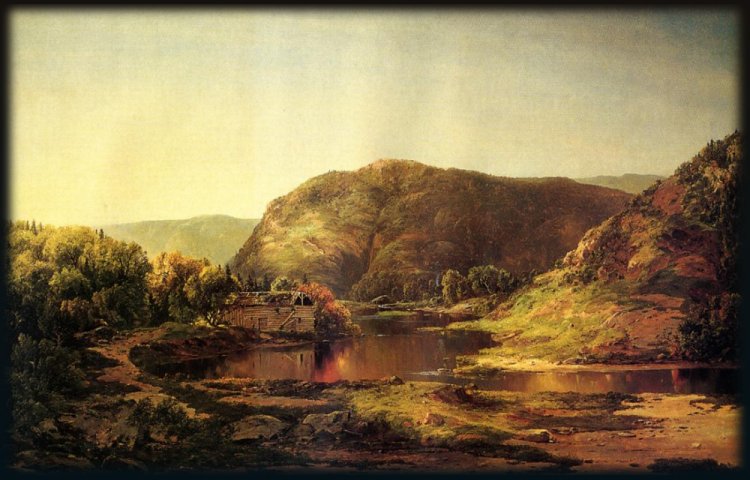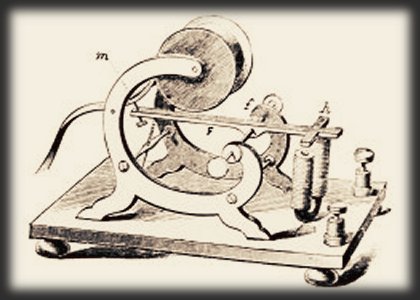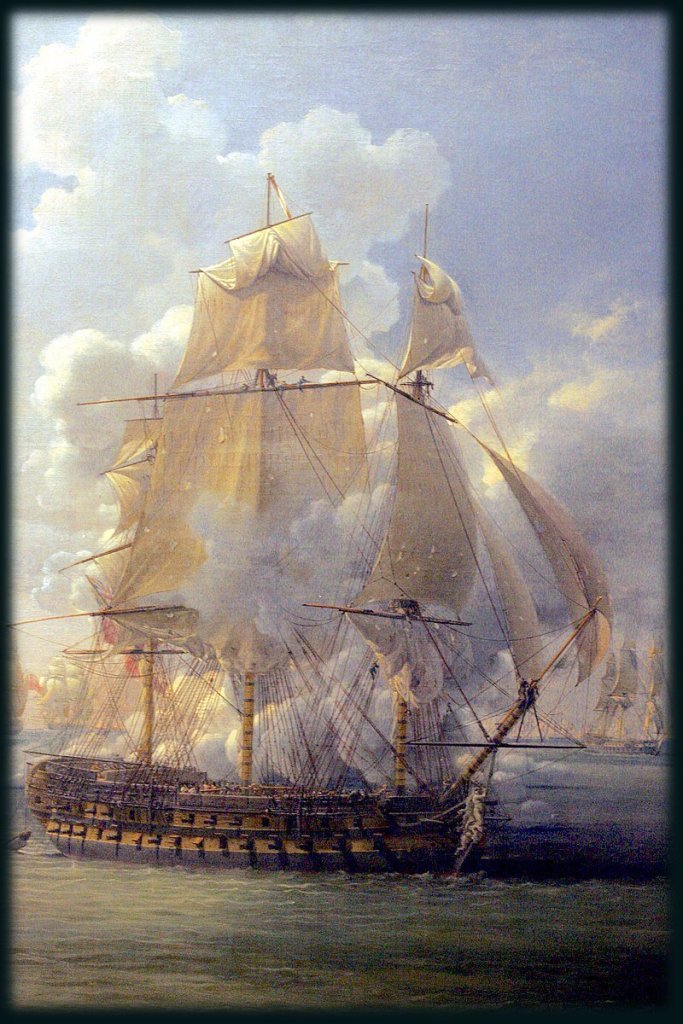~ September 5, 1871 ~
On the cape to the NORTH: Christ Church, Lancaster County, Virginia
WHEN RACHEL CHOWNING HEARD the clatter of galloping hooves, she set aside the basket of beans she’d been shelling and went to the cabin door.
“The British are coming!” boys’ voices whooped from the lane.
“Ships sailing into the bay!”
“Warships! Cannons on deck!”
“Union Jack flying!”
“They’ve come to save General Cornwallis!”
The young riders thundered away, spreading the news.
Rachel’s six-year-old son cheered after them from the top of the fence where he had clambered, barefoot in spite of the rough, prickly grass stubble in the yard.
“John,” Rachel called. “Grab your jacket and boots.”
“Why? It’s plenty warm!”
“It’s chilly on the point. Wind always blowing. Boots on. Get your jacket while I saddle the mare.” She drew on her riding pantaloons beneath her skirts, tied on bonnet and shawl, and headed for the stable.
“Are we going to find Papa?” John climbed from a barrel to the top of the stall partition. “Will he be at the point?”
“No, he’s far away.” Rachel cinched saddle straps, turned the mare to the mounting block, then vaulted astride with a swirl of skirts. The army needed all the doctors they could get. Her husband, William Briscoe, had joined a year ago, an asset to the Republic even at the ripe old age of forty-one.
“Still treating sick soldiers?” John hopped across to the horse’s rump.
“That’s right. Now hold tight around my waist.” The 25-year-old urged the mare to a trot. No need to ride lady-like, prim and proper, in times of war.
The lane led south out of the town of Christ Church. At the next settlement it swung southeast, and for twenty minutes they rode, spurring to an occasional canter.
Rachel slowed the mare to a cooling walk as they neared Windmill Point. They broke out of scrubby woodland, and Chesapeake Bay unfurled before them. The bay stretched inland to the left, clear up north to Baltimore and the mouth of the Susquehanna River.
A brisk sea wind blew from the north-northeast, welcome relief after the sweltering humidity of August. She could barely make out Cape Charles, twenty miles to the east, a smudge on the shimmering horizon.
Straight ahead to the southeast, the way to open ocean, a line of ships rode the swells. Prows first. Heading inland from the Atlantic. Sails billowing and flags flying. Flags bearing Britain’s colors.
“I see them!” John cried in delight. “One, two, three–“
“We need a spyglass,” Rachel said, squinting into the distance.
“Where are they going?”
“They’ll try for Yorktown.” Rachel waved to the right. “Two points down, at Yorktown. They must be trying to free General Cornwallis from the siege.”
“Corn Wally? Who’s that?”
Rachel curled her lip. “The British sent him to take control of our colony. Just two months ago he sailed in with his troops and started building a fort there. But the French are helping us. We have him surrounded. Now he can’t get out, and he’s stuck in there, short on food.”
John looked out in the bay. “I see seventeen ships coming. What will they do?”
Rachel shaded her eyes against the midmorning glare. “I count nineteen. I think they’ll try to chase away any American ships, and land more troops, and bring the general more provisions.”
“Look, Mama, look! More ships! Where did they come from?”
It was Rachel’s turn to whoop. “It’s the French! They’ve been drawn up around Yorktown, keeping Cornwallis from coming out. Now they’re going out to meet the enemy. Count them, John!”
The boy ticked off each ship as it heeled out into the bay, forming a rough line. “Twenty-four! We outnumber the British!”
“Stay in the saddle, high enough for a good view, while the mare grazes.” Rachel Chowning dismounted. “I think we’ll be here a while.”
~ still September 5, 1871 ~
On the cape to the SOUTH: Greenbrier, Cape Henry, Virginia
Boom!
Rachel Laws startled. Tea sloshed from her cup.
The parson’s wife gave a muffled yelp and clutched at her throat. “Oh my goodness, what was that? Oh my!” Another thunderclap followed hard on the first.
“I must be going now,” the 23-year-old visitor said, setting down cup and saucer, and rising. “I’ll just collect my children from the kitchen, and thank your cook for watching them.”
“But what was it?”
“Cannon fire.”
“Lord above! Who has cannons hereabouts?”
“I believe Cornwallis has one or two in his fort, although the direction seems off. Thank you kindly for your hospitality. I’ll just let myself out.” Rachel hurried down the hall.
Her four young children sat on the cool kitchen floor, cracking hazelnuts. Susannah, the five-year-old, pounded away like a blacksmith while Moses, age four, picked the nutmeats out. The two younger ones rolled nuts and giggled.
“Come,” Rachel said. “Time to leave. Thank Cook for tending you.”
“Thank you, Cook,” Susannah said, handing over her hammer, echoed by Moses delivering the nutmeats bowl. The two little ones scampered out the door with hazelnuts clenched in fists.
Rachel lifted her brood one by one into the pony-cart, climbed to the seat, and flicked the reins, clucking at the pony. They set off on the ten-mile journey home. The lane wound around the north end of Cape Henry, giving a view northwest towards Yorktown, and directly north onto the mouth of Chesapeake Bay.
Early afternoon sun warmed her shoulders, but the wind nipped at her face as Rachel gawked at the sight. Two lines of warships formed a great V, drifting slowly east toward the Atlantic. The leaders fired at each other. Gunpowder flashed. Smoke plumed.
While she watched, the mainmast of one British ship toppled, the sails luffing like wings of a downed bird.
“What’s happening, Mama?” Susannah asked.
“Our French friends are trying to drive off the new-come British.”
“Which is which?”
“See the flags? The white and gold ones, those are French. British flags carry a red cross on top of a white one on a blue field.”
“The new fort flies one of those.”
“Yes, but for how long, I wonder? Look! There are more French ships than British.”
Susannah cocked her head. “They’re all sailing out to sea!”
The middle sections of the fighting lines had come in range of each other and joined in the fray, though the last ships merely followed in the wake, still too far apart.
“Boom, boom!” the younger children yelled, jumping around in the cart and laughing.
Rachel lingered, watching the combatants heeling hard in the wind, heading for open ocean.
She glanced toward Yorktown, perched within its fortifications on the cape to the northwest. American and French troops still surrounded the British fort. “Aaron, are you among them?” she whispered into the wind. “Please write. Let me know how you fare.”
Her husband had vigor enough to last through most trials that came in a time of war, and a sharp mind to keep himself out of trouble. A natural leader, Aaron Davis might even have risen in the ranks by now.
“Boom, flash, boom!” Moses shouted.
“Wave goodbye to the brave ships now, children,” Rachel said. “Sit down. We’re on our way home.”
Extract from a dramatized history of my ancestors.
The Battle of the Chesapeake, also called the Battle of the Virginia Capes, went through hours of maneuvering before artillery actually engaged, the bombardment lasting two hours. A shift in afternoon wind favored the French. Sundown ended the battle.
For several days following, the two forces held a stand-off at sea. Then the British sailed back north to occupied New York for reinforcements. They returned in October, but too late. Cornwallis surrendered to the American and French forces on October 17.
It is only my conjecture that my ancestors Rachel Chowning and Rachel Laws went out to witness the battle. They did, however, live just to north and south of Yorktown, on capes that jutted into Chesapeake Bay — although the actual distances make it unlikely they could see much of the action.
“Chesapeake,” meaning “mother of waters,” was the name of the area as used by the Powhatan federation of tribes.
Details about the heat and prickly dry grass stubble: provided by my granddaughter who lived in Virginia from age 3 to 7. 😀
text: © 2022 Joyce Holt
artwork: 19th century century paintings. Public domain info here.






